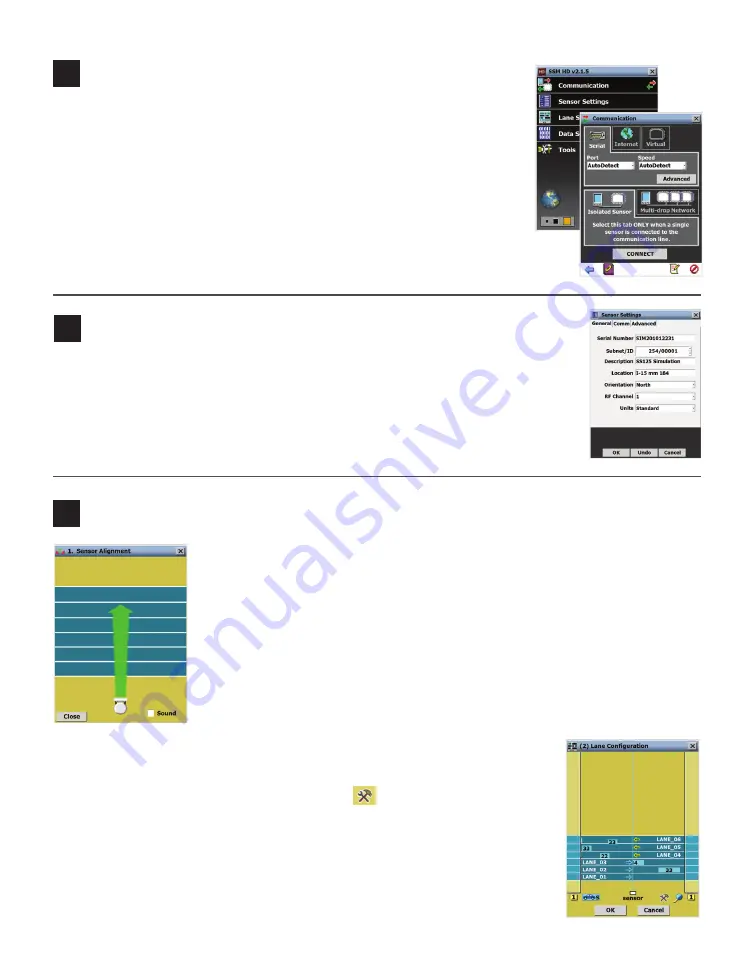
9
Complete sensor alignment and configure lanes
7
Make a connection
Open SmartSensor Manager HD (SSMHD) on your laptop to connect to the
sensor:
1
Make a physical or wireless connection to the sensor; generally you
do this via a Click device that has a communication connection with
the
sensor—for instance, you could connect to an Ethernet device on
the
same T-bus as the Click 200 surge protector the sensor is connected to.
2
Launch SSMHD and click
Communication
on the main menu. Based on
the kind of connection you’re making, go to the
Serial
or
Internet
tab.
3
Change any necessary settings, such as port, speed or address, and click
Connect
.
1
Select
Lane Setup
from the main menu, then
1. Sensor Alignment
.
2
Adjust the sensor according to the arrow. A green arrow means the sensor is
positioned for optimal performance; a yellow or red arrow means the sensor is
NOT correctly aligned with the roadway.
If the sensor is too far out of align-
ment, you’ll receive an error message pop-up.
3
Tighten the strap screws holding the mounting bracket the rest of the way once
the sensor is aligned properly.
For this tool to function properly, traffic must be flowing freely. Each time you adjust
the sensor, several vehicles need to pass before the alignment tool’s output is valid.
From the SSMHD main menu, open
Settings
, to configure certain settings for this sensor.
˽
Description –
(
General
tab) Add text here to help you identify the sensor later.
˽
Location –
(
General
tab) Add the sensor’s location here to help you identify it
later.
˽
Output Type –
(
Advanced
tab) Ensure that this is set to Antenna.
8
Enter the sensor settings
Follow the steps below to automatically configure the SmartSensor HD:
1
From the Lane Setup window, click
2. Lane
Configuration
.
2
In the window that opens, click the
Tools
icon
and select
Clear Edit Area
.
3
Click the
Tools
icon again and then click
Restart Auto Cfg
. Click
OK
.
4
As the tool runs, blue lanes will appear where the sensor detects them. Once
all the lanes have been detected and placed, Click
OK
. If no lanes appear,
click on the magnifying glass and make the top line says “Hide Auto Lanes”;
this indicates lanes are set to be shown.
5
A window will pop up to ask if you’d like to save the configuration. Choose
Yes
.




